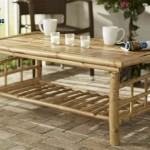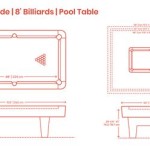How To Build A Baby Changing Table Dresser With Drawers
Creating a baby changing table dresser offers a dual-purpose furniture piece that efficiently saves space and provides convenient storage. This project involves combining a traditional dresser with a secure changing area, allowing for easy access to diapers, wipes, and other essential baby care items. This article details a step-by-step approach to building such a unit, focusing on safety, functionality, and aesthetic integration with existing nursery decor.
The planning stage is crucial for a successful build. First, determine the required dimensions based on the available space and the size of the changing pad chosen. Standard changing pads typically measure around 16-17 inches wide and 30-32 inches long. The dresser’s height should also be considered, aiming for a comfortable height that minimizes back strain during diaper changes, generally around 36-40 inches. It is beneficial to sketch a detailed plan with accurate measurements before proceeding with material selection. Consider the number of drawers and their respective sizes based on projected storage needs.
Material selection plays a significant role in the durability and safety of the changing table dresser. Solid wood, such as pine, maple, or oak, is a popular choice for the dresser frame and drawer fronts due to its strength and aesthetic appeal. Plywood or MDF (Medium-Density Fiberboard) can be used for drawer boxes and the top surface, providing a stable and smooth surface. Ensure that all materials used are non-toxic and free from harmful chemicals, particularly if using composite wood products. Select hardware, such as drawer slides and knobs, that are sturdy and reliable. Prioritize quality over cost when choosing materials, as this directly impacts the longevity of the finished product.
Prior to commencing the construction, acquire all necessary tools. A table saw or circular saw is essential for cutting lumber to the required dimensions. A drill with various bits will be needed for assembling the frame and installing hardware. A pocket hole jig can be utilized for creating strong and concealed joints. Clamps are vital for holding pieces together while glue dries. Other helpful tools include a measuring tape, level, square, sander, and finishing materials, such as paint, stain, or sealant.
Constructing the Dresser Frame
The initial step involves building the dresser frame. Cut the lumber according to the pre-determined dimensions. Assemble the side panels, top, and bottom pieces using screws, glue, and optionally, pocket hole joinery for added strength. Ensure that all corners are square and properly aligned. Reinforce the frame with additional support pieces as needed, particularly if the dresser is intended to hold a substantial amount of weight. The back panel can be made from a sheet of plywood or MDF and attached using screws or nails. This back panel adds rigidity and prevents the dresser from racking.
Once the frame is assembled, focus on creating the drawer supports. Install horizontal rails inside the frame to support the drawer slides. The placement of these rails will depend on the height of each drawer. It is important to measure accurately to ensure that the drawers slide in and out smoothly. Use a level to guarantee that the rails are perfectly horizontal, preventing the drawers from binding. Attach the drawer supports using screws and glue for maximum stability.
Drawer construction follows the creation of the frame. Cut the drawer sides, front, back, and bottom from the chosen materials. Assemble the drawer box using screws, glue, or dovetail joints for increased durability. The drawer bottom can be attached using screws, nails, or by sliding it into a pre-cut groove in the drawer sides. Precision is key when assembling drawers to ensure they fit snugly within the frame. Attach the drawer slides to the drawer sides, aligning them carefully with the corresponding slides on the drawer supports. A slight misalignment can result in drawers that are difficult to open or close.
Creating the Changing Table Topper
The changing table topper is a crucial element of the construction. It provides a secure and comfortable area for diaper changes. The topper should be slightly larger than the changing pad to provide a surrounding border that prevents the pad from sliding off. Construct the topper frame from solid wood or plywood, ensuring that it is sturdy and capable of supporting the weight of the baby. The sides of the topper frame should be high enough to prevent the baby from rolling off the changing table, typically around 4-6 inches.
Attach the topper frame to the dresser using screws and glue. Ensure that the topper is centered on the dresser and securely fastened. Consider adding additional support pieces underneath the topper to reinforce its stability. A lip can be added to the back of the topper to prevent items from falling behind the dresser. The lip can be made from a small piece of wood and attached using screws and glue.
Safety is paramount when building a baby changing table. All edges and corners should be rounded or smoothed to prevent injuries. Use non-toxic paint or sealant to protect the wood and create a safe surface for the baby. Avoid using any hardware that could pose a safety hazard, such as sharp edges or protruding screws. Regularly inspect the changing table for any signs of wear or damage and make repairs as needed. Consider adding a safety strap to the changing table to further secure the baby during diaper changes.
Finishing and Installation
Prior to applying a finish, thoroughly sand all surfaces of the dresser and changing table topper. This will create a smooth and even surface for the paint or stain. Apply a primer to the wood to improve adhesion and prevent the finish from absorbing unevenly. Choose a non-toxic paint or stain that is specifically designed for use on children's furniture. Apply multiple coats of the finish, allowing each coat to dry completely before applying the next. A clear sealant can be applied as a final coat to protect the finish and make it easier to clean.
Install the drawer pulls or knobs after the finish has dried completely. Select hardware that is appropriate for the style of the dresser and easy to grip. Ensure that the hardware is securely attached and does not pose a choking hazard. Test the drawers to ensure that they slide in and out smoothly. Adjust the drawer slides as needed to achieve optimal performance. If the drawers are binding, try sanding down the edges slightly or applying a lubricant to the drawer slides.
Once the dresser is fully assembled and finished, position it in the nursery. Ensure that the changing table is easily accessible and that there is sufficient space around it for movement. Secure the dresser to the wall using anti-tip hardware to prevent it from tipping over. This is particularly important if there are young children in the home. Place the changing pad on the topper and secure it using straps or double-sided tape. Organize diapers, wipes, and other essential baby care items in the drawers for easy access. Inspect the changing table regularly to ensure that it is safe and functional.
Building a baby changing table dresser requires careful planning, attention to detail, and a commitment to safety. By following these steps, a functional and aesthetically pleasing piece of furniture can be created that provides years of use.

Diy Changing Table Dresser Kreg Tool

Diy Simple Vintage Inspired Dresser Free Woodworking Plans

I Built Our Daughter The Ultimate Changing Table Dresser

5 Drawer Dresser Changing Table Her Tool Belt

Diy Modern Changing Table From An Outdated Dresser

Nursery Changing Station Diy With Storage Jenna Sue Design
:max_bytes(150000):strip_icc()/38465-25020590e6184d249b9edf732c1e3e81.jpg?strip=all)
Double Duty Changing Table Dresser For All Ages Woodworking Plan

Nursery Makeover Part 2 How To Convert Dresser Baby Changing Table On A Budget Under 50

Diy Baby Change Table Top Madness Method

Baby Changing Table Diy Build Gray House Studio








